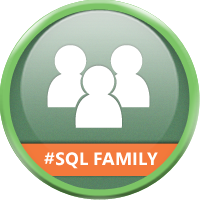So...
While 2016 temporal tables makes a lot of sense in an OLTP environment, where we also write reporting queries
our selves - for example the following join between facts (F) and temporal SCD2 table of Product dimension (P):
ON P.ProductId = F.ProductId AND F.FactDate BETWEEN P.ValidFrom AND P.ValidTo
I wonder if this is relevant at all to power bi or SSAS models
where join between facts and dimension uses direct comparison of joined columns only (no BETWEEN...)
I guess we could over come this limitation by adding a calculated field in the temporal scd2 table that would concatenate fields ProductID + ValidFrom to recreate some kind of traditional FK between facts and Product dimension so we are still left with a nice cut in ETL development costs of SCD2 dimensions?
Has any one tried this in Practice?
Any foreseen pros unt cons?
TIA!
Rea
